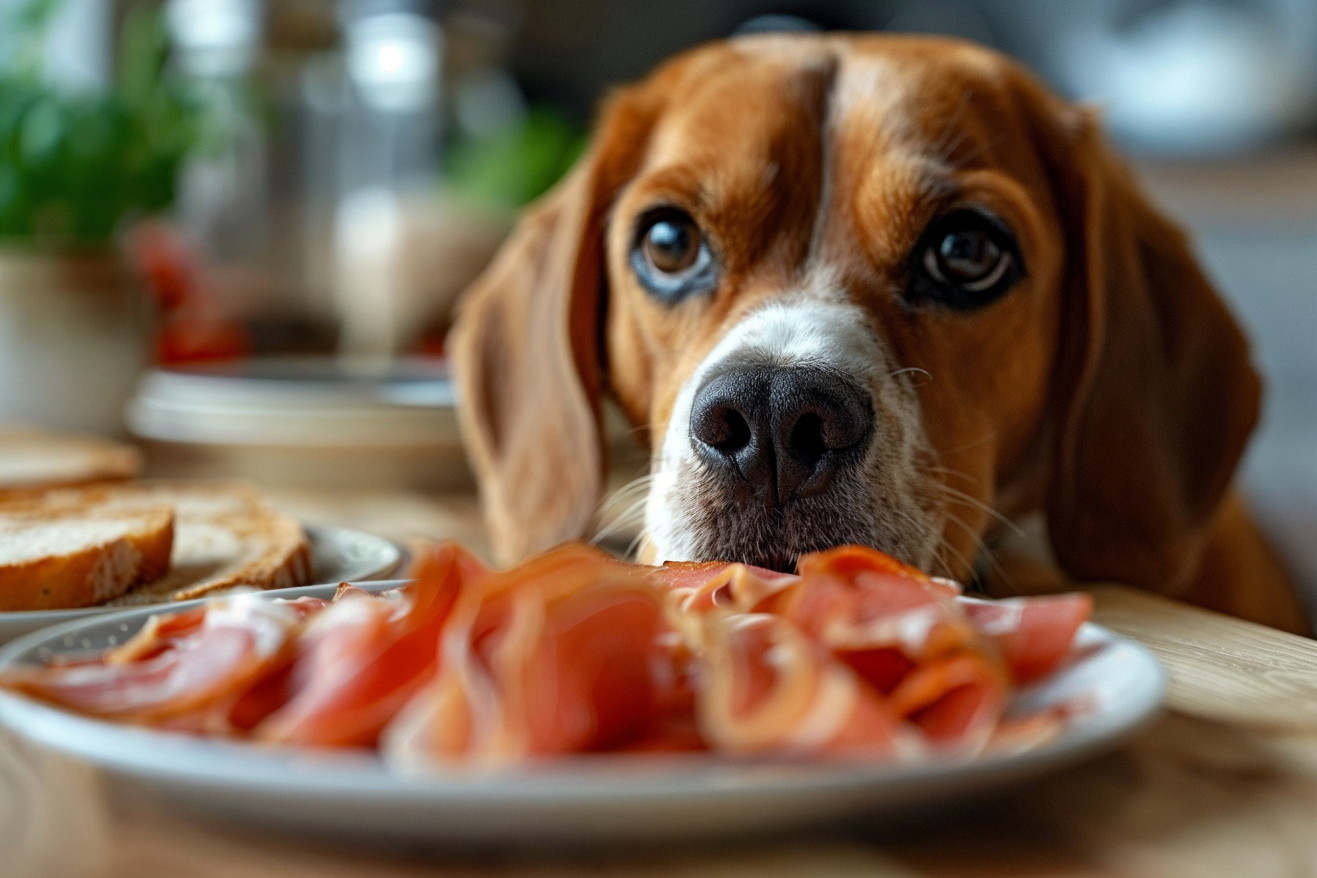Can Dogs Have Lunch Meat? The Good and the Bad
25 April 2024 • Updated 25 April 2024

Given the number of pet parents who have turned to lunch meat as a snack or meal option for their dogs, it's important to know the potential pros and cons. While lunch meat isn't poisonous, it is often packed with salt and other additives that can be harmful to dogs. That said, if you choose low-sodium, low-fat options like turkey, chicken, or roast beef, you can give your dog a low-calorie, high-protein treat every now and then.
To get a complete picture of this subject, we'll look at research on the nutritional needs of dogs, the impact of sodium and preservatives on dogs, and advice from experts on how to use lunch meat as an occasional protein source. By the end of this evidence-based evaluation, you'll have the information you need to feel confident about your decisions regarding your pup's diet.
Can dogs have lunch meat?
What Is Salt Toxicity in Dogs?
Salt toxicity, or hypernatremia, is a life-threatening condition that occurs when a dog has too much sodium in its body. It can be caused by a number of things, including eating salty foods like deli meats, drinking saltwater, and not having access to fresh water. Symptoms of salt toxicity include dehydration, vomiting, diarrhea, weakness, muscle tremors, seizures, and neurological symptoms such as dizziness and confusion.
It is important to act fast - avoid letting the dog drink too much water, and get them to a veterinarian for treatment, which may include medications, intravenous fluids, and hospitalization. While the lethal oral dose of salt in dogs is approximately 4 g/kg, the Merck Veterinary Manual notes that clinical signs can occur at doses as low as 2-3 g/kg. The high sodium content in many deli meats makes salt poisoning more likely if they are overfed, so it is important to feed them in moderation.
Risks of Feeding Dogs Lunch Meat
Lunch meats are processed meats that are high in sodium, preservatives, and other additives that can be dangerous for dogs. Dogster notes that the high sodium content in lunch meats can lead to salt poisoning, which was discussed in the previous section. Other additives in lunch meats that are worrisome include nitrates, which have potential health risks, and carrageenan, which can lead to digestive problems.
In addition, the high fat and calorie content in lunch meats can contribute to obesity and obesity-related health issues in dogs. Most veterinary professionals advise against feeding dogs lunch meat or only doing so in very small amounts.
Better Protein Options for Dogs
Cooked, unseasoned chicken, turkey, beef, and fish are all great protein options for dogs and are much better for your pet than deli meat. Sploot Vets says that these proteins can be used as low-calorie treats in small amounts, as long as you remove any bones that could be a choking hazard.
You can also use cooked vegetables like pumpkin, green beans, carrots, and spinach to give your dog fiber, vitamins, and other nutrients. Medical News Today explains that pumpkin is a great source of fiber and beta-carotene, while green beans, carrots, and spinach can provide a variety of vitamins and minerals.
Cooked oatmeal is a good option, too, because it contains vitamin B, linoleic acid, and soluble fiber, all of which can help your dog's skin, coat, and digestion. The American Kennel Club says that oatmeal is being used more and more in commercial dog foods for these reasons.
Finally, while apples and bananas can provide vitamins and fiber, they also contain natural sugars, so you should give them to your dog in moderation. ZamiPet recommends introducing new foods slowly over a period of 5-7 days so you can watch for any digestive upset or negative reactions.
How to Read Dog Food Labels
The American Kennel Club notes that dog food labels are required to include the percentages of crude protein, fat, fiber, and moisture, as well as any claims or guarantees. Ingredients are listed in descending order of weight and must be listed by their individual names. The nutritional adequacy statement will tell you what life stage the food is meant for.
According to Association of American Feed Control Officials (AAFCO) standards, the minimum sodium content in the dry matter of dog food for healthy adults is 0.3%. However, the European Pet Food Industry Federation (EPFIF) has set an upper limit of 3.75 grams of sodium per 1,000 calories, and some dog foods exceed this amount.
It's important to read dog food labels carefully and understand the sodium levels in the food you're considering to make sure it meets your dog's dietary requirements and doesn't expose them to the potential dangers of too much sodium.
Conclusion: Moderation is Key
While lunch meats are not toxic to dogs, their high salt, preservative, and additive content make them an unhealthy choice for regular consumption. According to Dogster, consuming too much sodium from lunch meats can lead to salt poisoning, which can be life-threatening.
Other concerning additives in lunch meats include nitrates, which have potential health risks, and carrageenan, which can cause digestive issues. The high fat and calorie content of lunch meats can also contribute to obesity and related health problems in dogs. Veterinary experts generally recommend avoiding or strictly limiting the amount of lunch meat fed to dogs.
Lean, unseasoned meats like chicken, turkey, or roast beef can make an occasional low-calorie protein treat when given in moderation. According to Sploot Vets, these lean proteins are safer alternatives to lunch meat. Vegetables like cooked pumpkin, green beans, carrots, and spinach can also provide fiber, vitamins, and other nutrients as healthy treats for dogs.
The American Kennel Club advises carefully reviewing dog food labels to understand the sodium content and ensure it meets your dog's dietary needs. Providing a balanced diet with healthier protein sources and gradually introducing any new foods is recommended for optimal canine health. As with any new food, it's crucial to introduce changes to a dog's diet gradually and under veterinary guidance.


